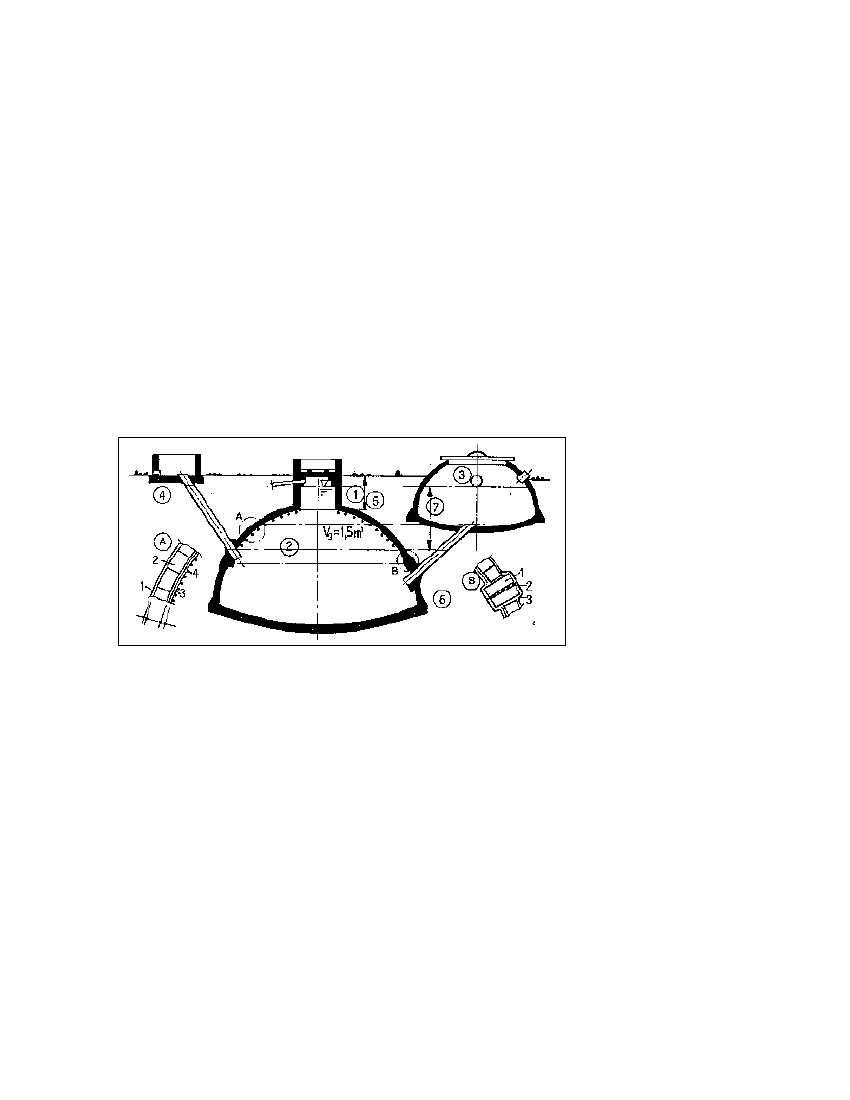
For either design, it is necessary to note that substantial force can be necessary to turn the drum,
especially if it is stuck in a heavy layer of floating scum. Any gasholder with a volume exceeding 5
or 6 m³ should be equipped with a double guide (internal and external).
All grades of steel normally used for making gasholders are susceptible to moisture-induced rusting
both inside and out. Consequently, a long service life requires proper surface protection consisting
of:
- thorough derusting and desoiling.
- primer coat of minium
- 2 or 3 cover coats of plastic/bituminous paint.
The cover coats should be reapplied annually. A well-kept metal gasholder can be expected to last
between 3 and 5 years in humid, salty air or 8-12 years in a dry climate.
Materials regarded as suitable alternatives to standard grades of steel are galvanized sheet metal,
plastics (glass-reinforced plastic/ GRP, plastic sheeting) and ferrocement with a gaslight lining. The
gasholders of waterjacket plants have a longer average service life, particularly when a film of used
oil is poured on the water seal to provide impregnation.
Fig. 5.23: Construction
of a fixed-dome
gasholder. 1 Slurry level
for an empty gasholder
(zero line), 2 Slurry level
for a full gasholder, 3
Overflow, 4 Inlet =
overpressure relief, 5
Earth cover (at least 60
cm), 6 Reinforcing ring
at foot of dome, 7 Max.
gas pressure. A Detail:
wall construction: .1
Outer rendering,.2 Masonry, .3 Twolayer inner rendering, .4 Seal coat. B Detail: rated break point:
.1 Masonry bricks (laid at right angles), .2 Joint reinforced with chicken wire, .3 Seal rendering -
inside and out (Source: OEKOTOP)
Fixed domes
In a fixed-dome plant the gas collecting in the upper part of the dome displaces a corresponding
volume of digested slurry. The following aspects must be considered with regard to design and
operation:
- An overflow must be provided to keep the plant from becoming overfilled.
- The gas outlet must be located about 10 cm higher than the overflow in order to keep the
pipe from plugging up.
- A gas pressure of 1 mWG or more can develop in the gas space, Consequently, the plant
must be covered with enough earth to provide an adequate counterpressure; special care
must be taken to properly secure the entry hatch, which may require weighing it down with
100 kg or more.
59